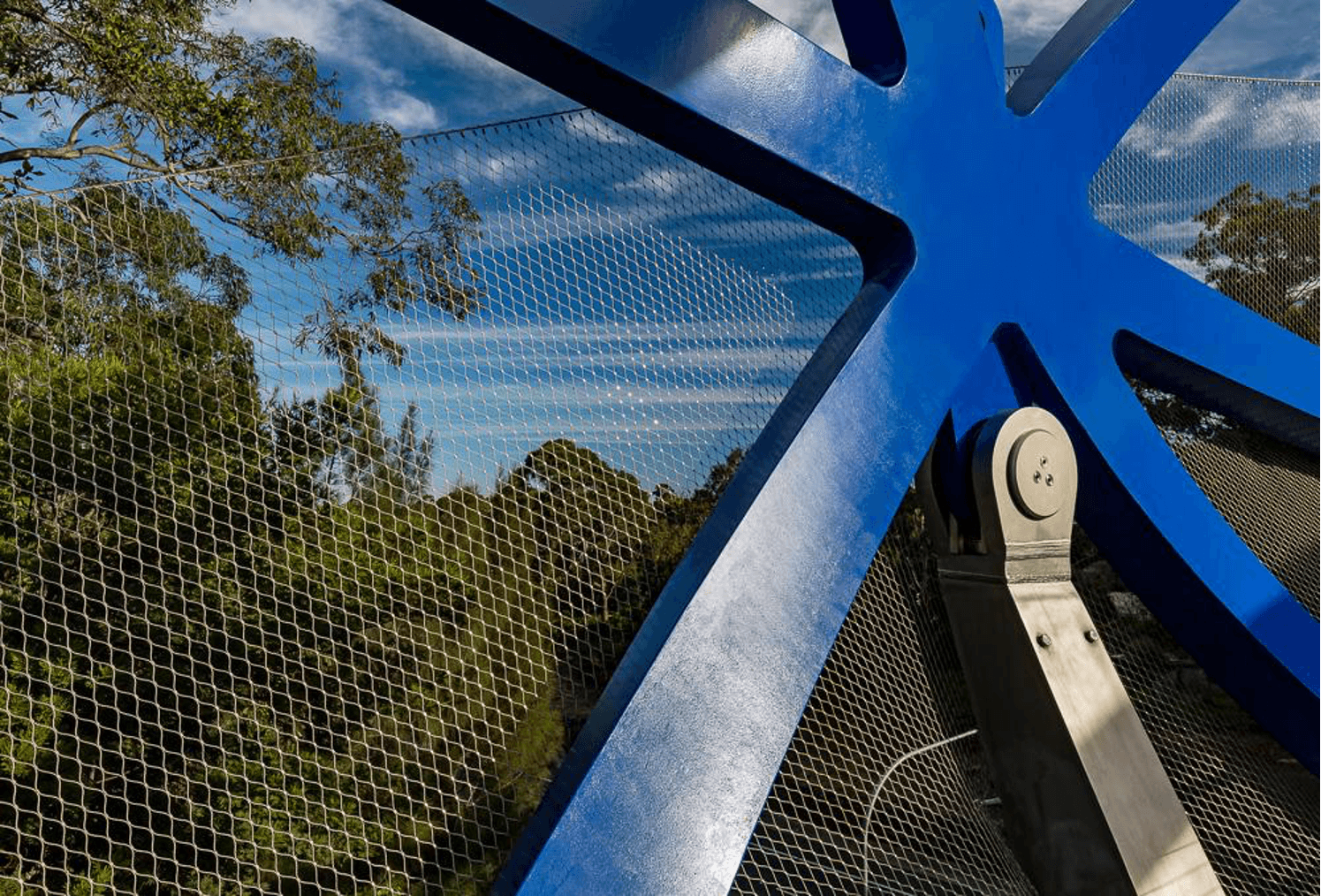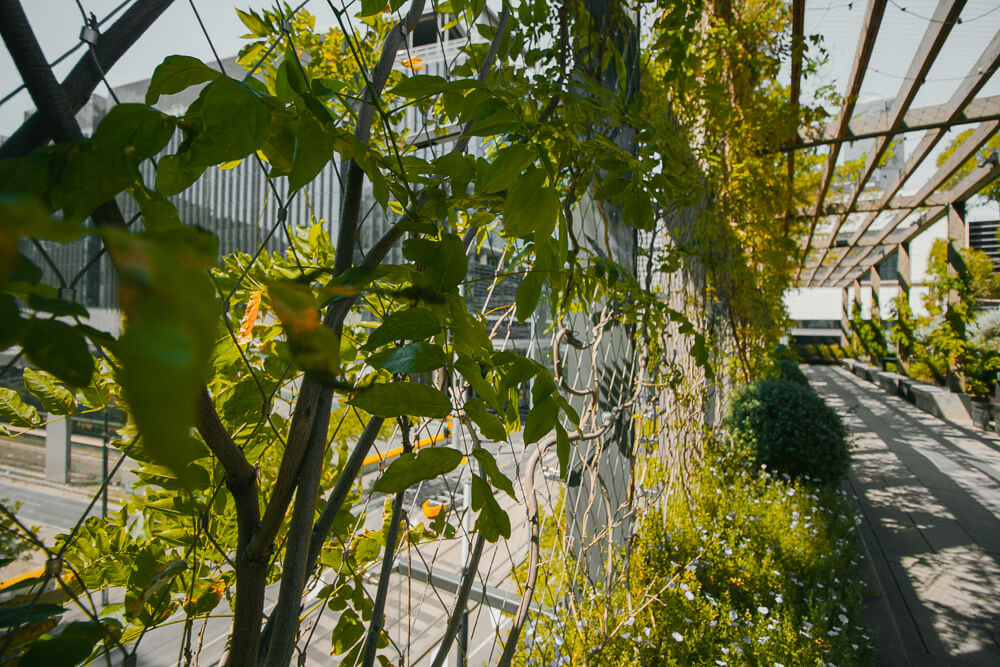Anti-throw screens are installed on footbridges and overpasses to prevent items from falling or being thrown over the edge onto passing traffic below. The screens can also be designed to prevent people from climbing and jumping.
Whether a bridge needs an anti-throw screen is determined by local road authorities and depends on a variety of factors. These include traffic volume, history of offences, proximity to shops and schools, and availability of projectiles.
Anti-throw screens can be made from various materials such as concrete, timber, Perspex, welded mesh and stainless-steel mesh. These materials vary in terms of cost and strength.
We use Webnet stainless steel mesh for our anti-throw screens, as this material allows for maximum strength and cost-effectiveness at the same time.
Here’s how.
Strong, adaptable anti-throw screens
Jakob’s Webnet mesh is made from woven marine-grade stainless-steel wire rope. It offers several benefits for anti-throw screens.
- Very high strength capacity – making it ideal for commercial projects involving large crowd loads.
- Greater flexibility, malleability and tensile resistance than, say, welded wire mesh which is a more rigid material.
- Suitable for bridges that have complex geometric shapes (such as Lachlan Line bridge in Sydney) without compromising on strength in any way.
- High resistance to environmental factors such as corrosion, weather and sea spray, which means it stays strong and robust for up to 25 years.

Webnet mesh offers cost effectiveness
Webnet’s robustness and strength contributes to its cost-effectiveness. But various other features do as well.
- Since a screen made from Webnet is anti-corrosive and so durable, it reduces the need for expensive replacements.
- Webnet is a relatively low-cost material to buy compared to various other barrier materials – glass and metal mesh fabric for example.
- Webnet is easy to handle and quick to install, saving on the costs of time and labour.
- The mesh can double as a green screen. If you are looking for a strong barrier material and a trellis for pots or climbing plants – Webnet can fulfil both needs in the one installation. Check out Skypark’s elevated green barriers in Melbourne for an example!
- Anti-throw screens made from Webnet have very low requirements for cleaning and maintenance – reducing the need for these services.
- Using Webnet removes the need for enclosing the whole bridge for safety reasons, which could add to costs as well as impede views, natural light and airflow. It could also impact the design and aesthetics of the structure.
- Webnet and stainless steel vertical cables have been shown to offer greater cost-effectiveness than glass when used to create transparent barriers on atriums that are anti-throw and non-climbable. They enable the full use of upper spaces as well.
Webnet also offers aesthetic benefits due to its light, filigree-like appearance and in the way it allows architectural design-intent to shine through.
Get in touch to find out more about creating strong and cost-effective anti-throw screens.






































